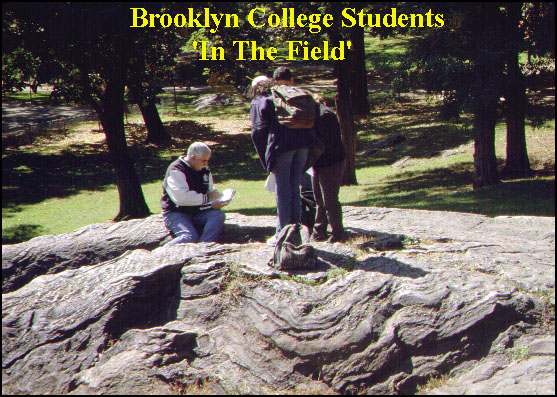
|
You have examined a host of different aspects of rocks to determine whether their origin is igneous, sedimentary or metamorphic. You have considered what rocks are made of, their textures, and their structures. The results have not been totally satisfactory. There seem to be many ambiguous cases, where two or more possibilities exist. Field relationships are the geologists' 'ace-in-the-hole'. To a geologist, the 'field' refers to rocks as they exist in nature, away from the laboratory. Geologists 'go into the field' to conduct 'field studies'. That is, they go out into nature to observe, describe, measure, and sample earth materials. In performing these actions, geologists pay special attention to location. They want to know the spatial relationships between the data they collect. To record these relationships, data is plotted on a map. From scattered, isolated localities, inferences are made to construct a 'geologic map' . From field relationships, many ambiguities as to origin may be resolved. Sometimes, however, field relationships bring new problems into focus. That's when the game gets especially exciting! Let's look at some situations where field relationships play an important role in an investigation. |
